World of Design: 9 Collectors and Their Cool Home Curations
http://decor-ideas.org 09/25/2015 03:13 Decor Ideas
One in a series from Houzz international editors on how our lives shape home design around the world.
Personal collections are fun, fascinating and sometimes sentimental. Each has a story that reveals the owner’s passions and personality, whether it’s an interest in vintage picture books in Japan, a penchant for Fender guitars in Italy or a love of wool blankets in Australia. Join us as we visit the homes of nine collectors from around the world who shared their cherished collections with us, along with their strategies for keeping their displays organized.
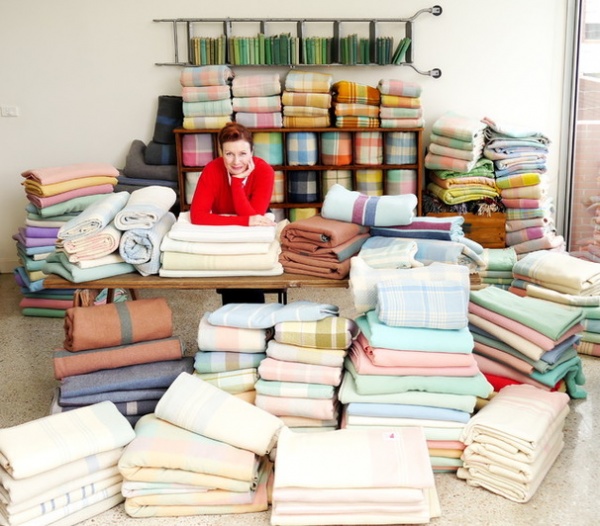
1. Cozying Up to Wool Blankets in Australia
Collector: Ramona Audrey, 45
Occupation: Bakery assistant and Airbnb host
Location: Fitzroy area of Melbourne, Australia
The collection: 257 Australian wool blankets, manufactured up to the 1970s
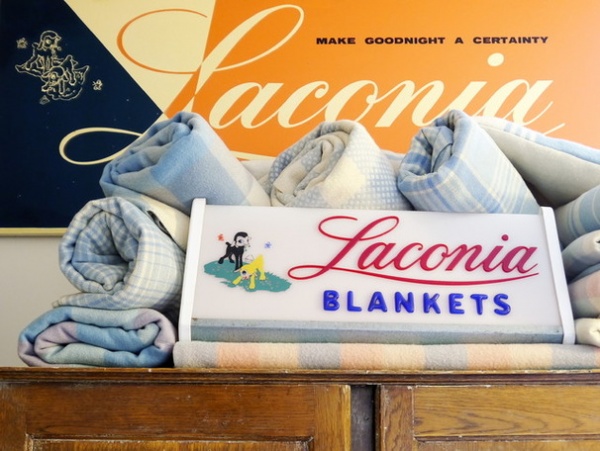
How she got started: “Six years ago I started collecting Onkaparinga travel rugs, so that on movie nights at home there would be plenty to go around. Everyone had their favorite; even the cat had his own — a small red tartan one,” Ramona Audrey says. Keeping an eye out for those led to the discovery of old blankets, as they’re generally stored together in the linens section of thrift shops. “When I discovered my first Laconia cream blanket with blue panels at the bottom, my eyes just went gaga. Even now these ‘panel blankets’ are my favorite style, and I have since gathered 42 of them in the only three colors they were ever made in: blue, salmon, mint.”
Audrey is also a huge fan of the graphic labels on the blankets. “Like Physician blankets, with their logo of a lady in bed, or Laconia’s lambswool blankets, with their logo of two little lambs and ‘Make Goodnight a Certainty’ slogan,” she says. “I’ve bought many a blanket just for its label.”
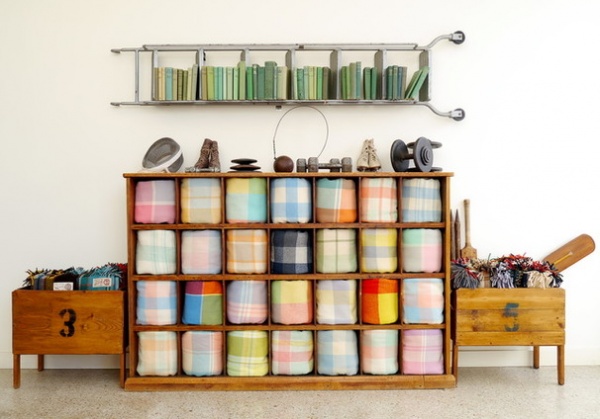
Storage strategy: “The blankets have pushed other collections out of cupboards, linen closets, pigeonholes and luggage racks into boxes in the garage,” Audrey says. “The blankets are winning by far!”
Best sources: “I’m in the midst of a 12-month project called Blanket Fever, where I have to go to every single op-shop [thrift store] in Victoria. There are at least 750 op-shops, and I’ve done over 500 so far,” Audrey says. “The purpose is specifically to collect blankets. Before I started the project, I had exactly 100, and since then I’ve found another 157. It’s a great bonus that I get to drive around the countryside a lot and visit so many lovely country towns.”
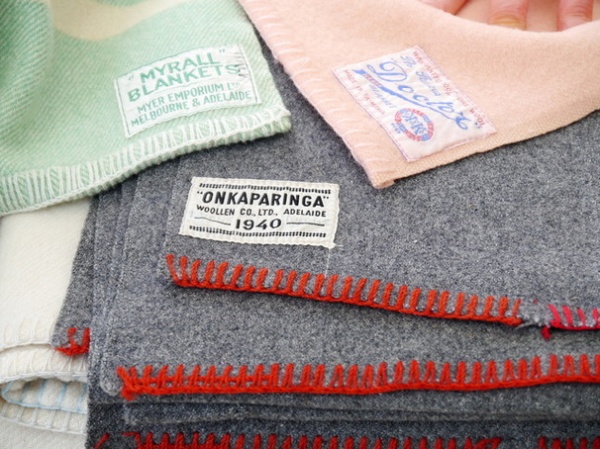
Favorite item: “I love all of them! I absolutely find these blankets so aesthetically gorgeous, such lovely items to live with and share. There were woollen mills all over Australia — Onkaparinga, Physician, Laconia, Waverley, Albany, K&K, Invicta, Warrnambool, Godfrey Hirst, Challenge, Excelsior, Castlemaine — making beautiful blankets of such wonderful quality that here they are 50, 60, 80 years later; items that were in every household, being used every day, were prized wedding gifts, keeping people warm and being handed down through the generations.
“If there is only one I can pick as my favorite, it would be a simple cream blanket with a thick soft mint panel and thin watermelon stripe,” Audrey says. “It has no label but looks like the blanket version of Agnes Martin’s painting Gratitude. Which is pretty much what I feel to have all these beautiful pieces of history all around my home.”
See more of this home
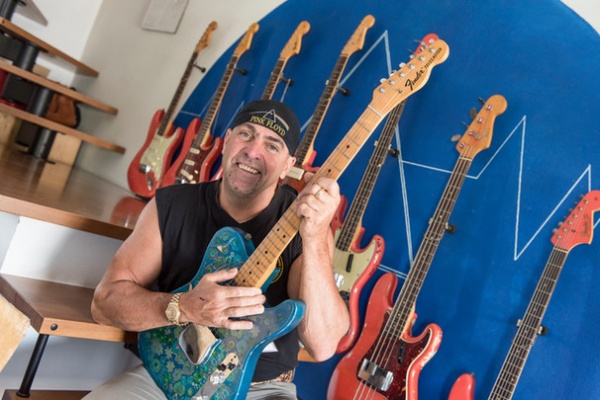
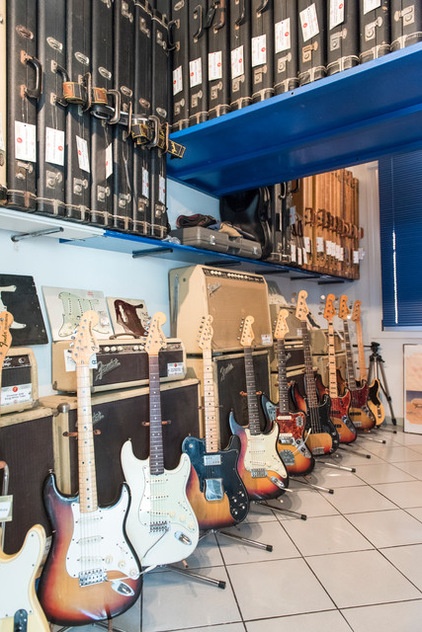
2. Fixated on Fender Guitars in Italy
Collector: Flavio Camorani, 53
Occupation: Hotel manager and owner of a full-service music and concert company, including a home recording studio. “I also play in the band Floyd Machine, the only officially recognized Pink Floyd tribute band in Italy,” Camorani says.
Location: Forlì, Italy
The collection: 100 guitars produced by Fender from 1951 to 1964, along with their cases, as well as a large number of documents and memorabilia related to the company
How he got started: “At the beginning of the ’80s, I was a big fan of music and vinyls,” Flavio Camorani says. “With the tips I got from my job as a waiter or bartender, I started buying my first instruments. The very first was when I was 19: a ’79 Fender Stratocaster black maple-neck.
“I decided to focus only on Fender guitars, and after 34 years I have a rare collection in Italy and in the world. My house is a sort of museum, and the collection can be rented, so it’s a form of traveling museum.”
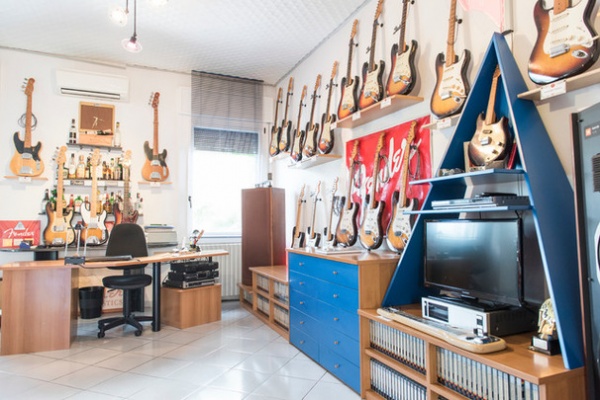
Storage strategy: “There are many shelves all over the house and guitars in every room except the kitchen and the bathroom, as the humidity could damage them,” Camorani says. “I have a dehumidifier so that they will not get old or in bad shape. The living room is dedicated to Fender Telecaster guitars, and I also have a snare drum with the autographs of five very famous drummers: Nick Mason, Stewart Copeland, Ian Paice, Carl Palmer and Billy Cobham.”
Best sources: “The best way is actually traveling to old vintage music shops, talking with people to get a great deal.”
Favorite item: “I really cannot answer this question. My guitars are like children for me. Some are more expensive and rare, others more common and simple, but I love them all the same way.”
See more of this home
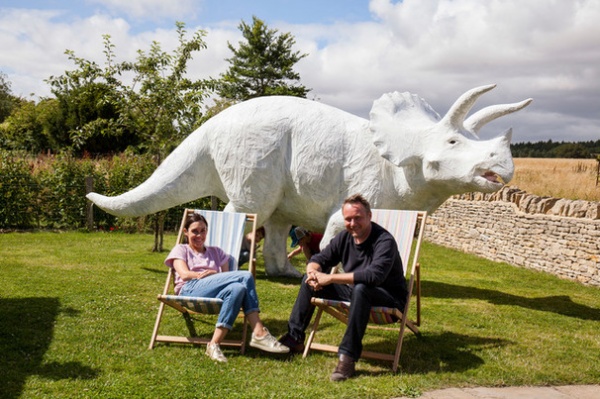
3. Dinosaur Devotion in the U.K.
Collectors: Jay Jay Burridge, 44, and wife Mel Moss
Occupations: Both are artists
Location: Oxfordshire county, England
The collection: Dinosaurs — “lots of dinosaurs,” says Jay Jay Burridge, who has sculpted 11 full-size dinosaurs and makes shoe-like resin Trainersaurus skulls. He has over 150 small-scale dinosaurs in his collection. He also collects vintage bullfighting posters, French school posters, British travel posters and enamel pots.
How he got started: “This all started with Lego and Star Wars figures, but the serious collecting started with unusual things made from Bakelite, and from that a large vintage telephone collection grew to around 80,” Burridge says. “As a teenager, I collected animal skulls and then created detailed drawings of them. When I first applied for Central Saint Martins [art college], my portfolio had hundreds of these drawings. Looking back, it’s no surprise my main subject matter in my art is dinosaurs.”
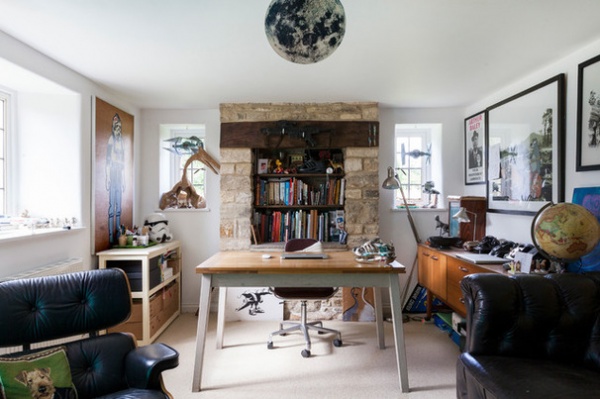
Storage strategy: “Move to the countryside — space is much cheaper,” Burridge says with a laugh. He also rents a warehouse on a local farm.
Best sources: “Landing at any destination, my first quest is always to find a flea market, brocante [secondhand shop] or yard sale. I have never had any luck with car boot sales [flea markets] in the U.K.,” Burridge says.
Favorite item: A 2,000-piece jigsaw stuck to a board and framed, discovered in a Paris dumpster. “Best find ever,” Burridge says. The most interesting item is an original rebel blaster prop gun from the film The Empire Strikes Back. There are only three in the world, and one of them is on his wall.
See more of this cottage
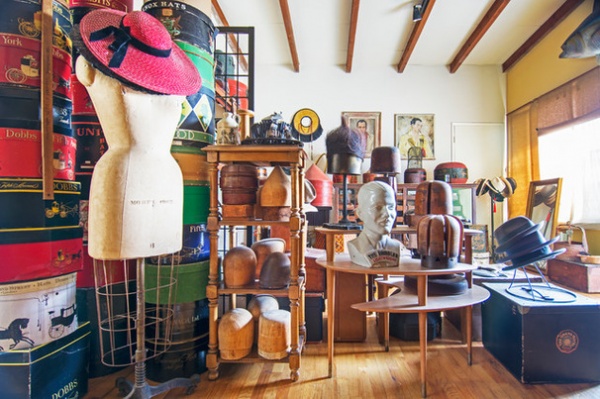
4. Hundreds of Hats in the U.S.
Collector: Wendy Ann Rosen, 58, and her dog, Maxim, and cat, Olive
Occupation: Makeup artist, instructor and editor of Uncover magazine
Location: North Hollywood area of Los Angeles, California, United States
The collection: More than 600 women’s hats from the 20th century, with a focus on designer creations. Also men’s hats, more than 600 hatboxes, tools used to make hats and printed materials such as hat ads, magazines, books and matchbook covers
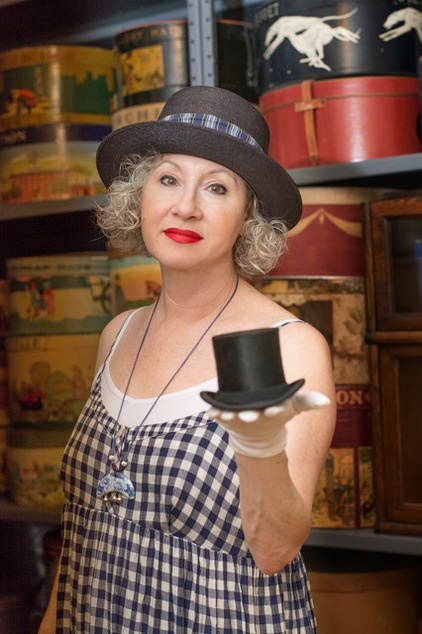
How she got started: Wendy Ann Rosen has been collecting for about 25 years. “In the mid-1980s, I received a small collection of 1940s hats in their boxes from department stores. It wasn’t until 1990 that I started to put together a cohesive collection,” she says. “I was always very lucky at finding what I was looking for.”
Storage strategy: “My living room has high ceilings, which makes it perfect for my tall stacks of hatboxes,” Rosen says. “The room is wall to wall, floor to ceiling with stacks of hatboxes and antique display cases. My house looks more like a hat museum than a home, and I dream of one day having a couch and a TV, but feel it would ruin the aesthetic of the collection.”
The hatboxes are in every room except the bathroom and kitchen, and Rosen notes that there’s a bit of an art to stacking them in earthquake-prone California.
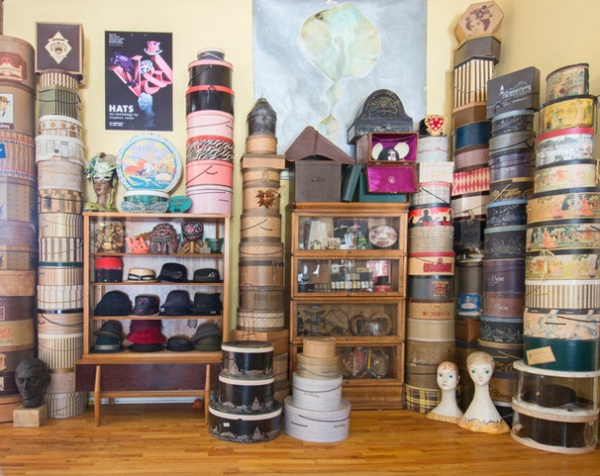
Best sources: “I am most actively buying Chinese hatboxes, which I mainly find on eBay,” Rosen says. “When I was in my prime of collecting, I would go to high-end antique shows; the Pier show in NYC was always one of my favorite shows. Costume and textile dealers such as Cora Ginsberg and Junnaa Wroblewski helped keep an eye out for me, and one of the most important parts of my collection is the Mr. John collection I acquired from the Los Angeles County Museum of Art.”
Favorite item: “At the moment, Chinese hatboxes. I’m not doing too much collecting right now — running out of space — but I always keep an eye out for them. Also a perfect miniature replica of a Dobbs beaver fur top hat.”
See more of this collection
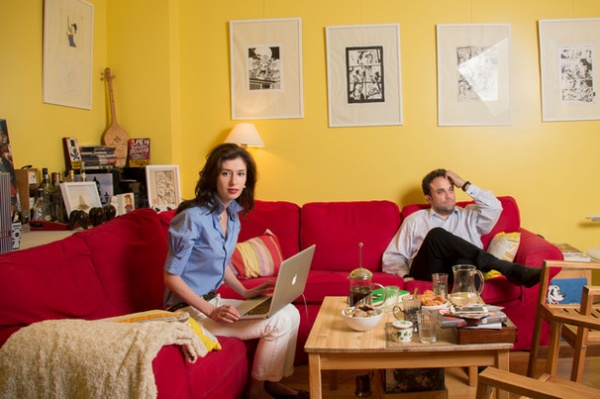
5. Celebrating Comics and Cartoons in Russia
Collectors: Donatiеn De Rochambeau, 40, and Ekaterina De Rochambeau, 38
Occupations: Donatien is a comics and animated-cartoons collector, curator and Raketa watch factory shareholder; Ekaterina is an art consultant and the Russian representative for the BRAFA art fair in Brussels
Location: Moscow, Russia
The collection: Original comic drawings, books and albums — “too many to count,” Donatien says, but over 500. Also original animation cels and figurines of cartoon characters.
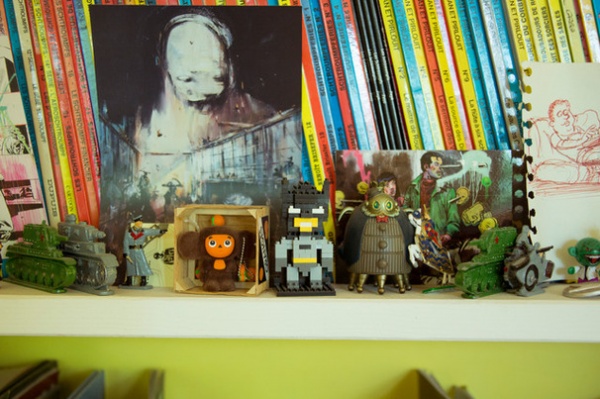
How he got started: “I’ve been interested in comics from childhood — it’s part of French culture,” Donatien De Rochambeau says. “Comic books have always been popular in my family along with other literature and press. As to authentic illustrations from the original sketches of cartoons, I became interested in it six years ago, and now there are a lot of works related to Soviet animated cartoons in our collection.”
Storage strategy: The couple redid their interiors and, because sun is at a premium in Moscow, decorated with bright colors, including yellow walls. “I put up the special and favorite items from the collection on the walls,” Donatiеn says. “There is a 3-meters-high [almost 10-foot-high] white closet with metal shelves in the living room for storing comic albums; those shelves sustain the collection’s considerable weight.”
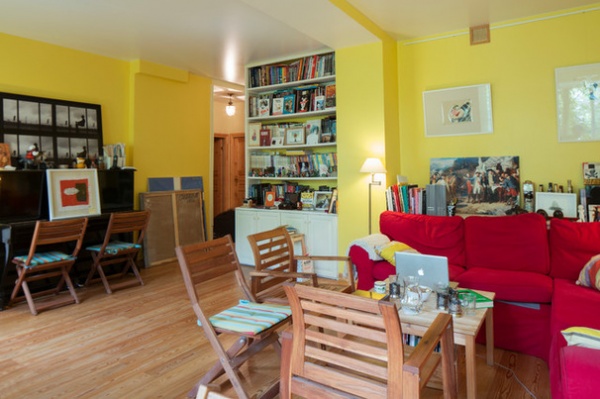
Best sources: “Comics have their own serious market, sellers and buyers,” Donatien says. “Most influential auction houses, including Sotheby’s, Christie’s and Artcurial, do comics auctions; also, there are big galleries specializing in comics in Paris, Brussels, London and New York. Major art fairs like TEFAF and BRAFA represent the masterpieces of original comics’ sketches between other showpieces.”
Favorite item: “It’s hard to say; lots of items are very dear to me. I approach comics like art, and I am trying to make it visible for a wider audience,” Donatien says. “In Russia it’s not usual to take comics seriously — even if most of the time those are not just pictures for little kids. Comics have a lot of social and political humor in them. Talented and skilled artists and screenwriters are creating them all over the world.”
See more of this home

6. Contemporary Art at Home in France
Collector: Gabriel Nallet, 43
Occupation: Notary
Location: Grenoble, France
The collection: About 200 pieces of contemporary art, including drawings, photos, paintings and sculptures
How he got started: Gabriel Nallet’s parents took him to museums often when he was a kid, but he discovered contemporary art as a teenager. “My parents were subscribers to La Gazette Drouot, and I was very puzzled about the high prices of very minimalist pieces. I needed to understand, so I bought a book about contemporary art,” he says.
The catalyst for collecting occurred when he discovered the painting Shining Forth (To George), by Barnett Newman, at the Centre Pompidou in Paris. Newman had painted the work in memory of his brother, who had died suddenly. “It was an incredible revelation — I didn’t think it would be possible to express emotions in such a minimalist painting,” Nallet says.
He bought his first contemporary art piece at age 25, from the series Punitions, by Isabelle Lévénez. “The concept was to write on pupils’ notebooks a nice sentence with the right hand and its contrary with the left one,” Nallet says.
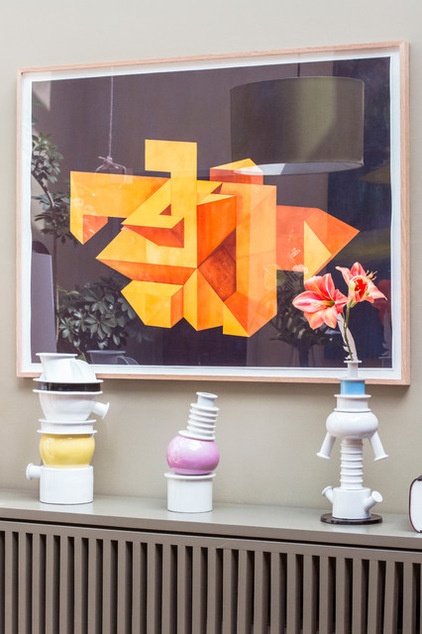
Best sources: “I find [my pieces] in about 10 galleries that I know and follow with a very strong interest. I also go to the Foire Internationale d’Art Contemporain, FIAC, in Paris; the Biennale of Venice; and other fairs, such as Artissima in Turin or Art-o-Rama in Marseille.
Favorite item: “I would rather say that it is always the next one,” Nallet says. “Although I own a photograph from the Czech artist Jiří Kovanda, titled XXX, that corresponds very well to my philosophy today. He is one of those artists who lived behind the Iron Curtain and who have developed a very poetic gesture without a lot of means.”
See more of this home
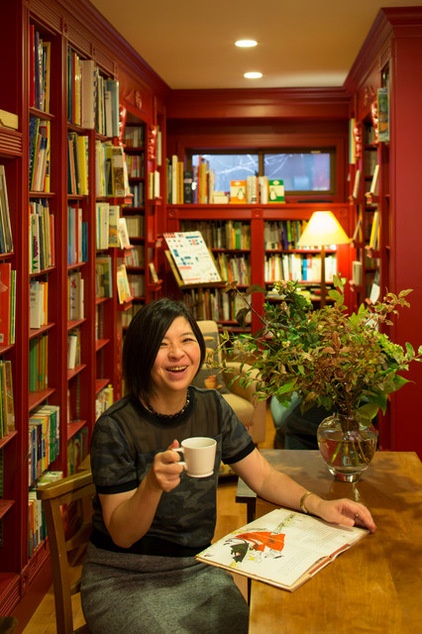
7. Colorful Picture-Book Library in Japan
Collector: Utako Yamada, 52
Occupation: Tea taster, founder and owner of the tea brand Karel Capek and writer-illustrator of picture books
Location: Tokyo, Japan
The collection: About 4,000 picture books, half of which are stored in her home library; 1,200 of the books are vintage, published between the 1950s and 1970s
How she got started: “In my childhood, my mother taught English to local children at YWCA Nagoya, and there were a lot of English textbooks with lovely, old-fashioned pictures in her bookshelf at home,” Utako Yamada says. “It was when I was only 3 or 4 years old that I started to enjoy reading picture books. My mother was so busy that she didn’t have enough time to read fairy tales to her daughters, but my sisters and I were brought up in the rich forest of colorful and fantastic picture books from foreign countries.”
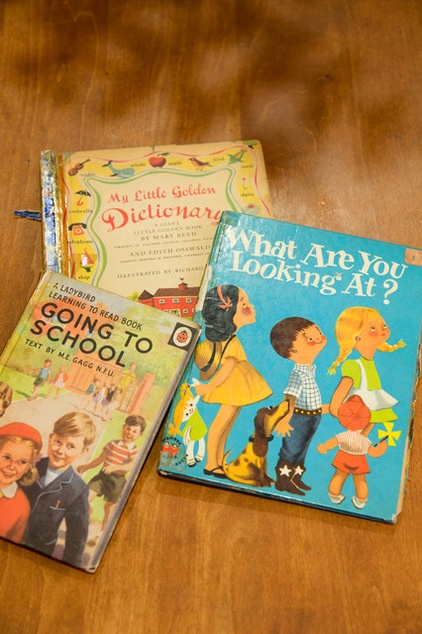
Seen here are the first picture books in Yamada’s collection, inherited from her mother. “I couldn’t read English at the time, but the realistic, joyful and humorous pictures told me a lot of things, so I often created my own stories,” she says. “I really loved playing in the world of imagination with each book.”
Best sources: “Since the first part of my collection is inherited, one of the best sources is my mother’s bookcase. She bought the books in the 1960s when they were brand-new,” Yamada says. “Naturally, the books from the 1950s to the 1970s fascinate me the most. I have collected old and new books from overseas and Japan. I sometimes buy vintage books from secondhand bookstores or online shops as well.”
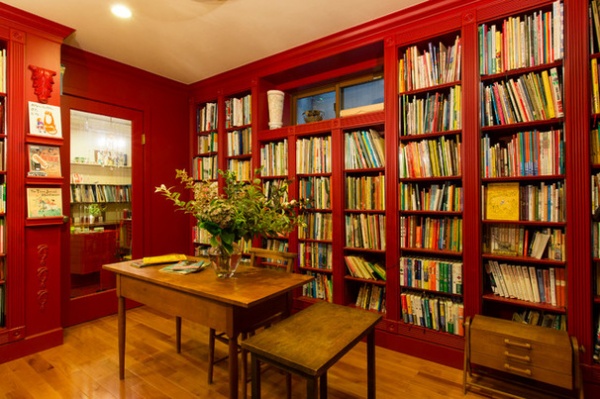
Storage strategy: “When my husband and I planned to build our new house four years ago, I requested the architect, Yoshinori Negishi of NOAH Architects, to make this basement library,” Yamada says. She keeps about 2,000 of her books here. “I wanted this space to be like one from the good old days, with a warm, intimate and cozy atmosphere. I put old small tables, chairs and comfortable sofas here, and I had all the walls and bookcases painted in my favorite deep red. I think this color, Wine Berry, is the perfect frame for the full-color spines of the numerous books.” The architect also made small display shelves for a rotating collection of favorite covers.
Favorite item: “My favorite author is Roger Duvoisin, a Swiss-born American writer and illustrator of picture books. I have a collection of more than 100 of his books,” Yamada says. “His exquisite style of painting and colors always stimulates my inspiration and imagination.”
See more of this home
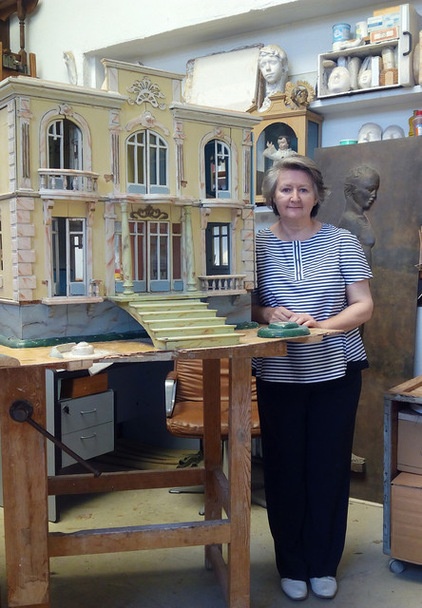
8. Big on Dollhouses in Spain
Collector: Belén González Díaz, 61
Occupation: Sculptor
Location: Valladolid, Spain
The collection: About 100 dollhouses, dolls and toys from different styles and periods
How she got started: Belén González Díaz bought her first dollhouse in 1995. “I used to play with a dollhouse that my aunt had, and I think that since then I have always wanted to have my own,” she says. “As a child, I built a house for my sister. I did the furniture and invented the people who lived there, which I carved in wood,” Díaz says.
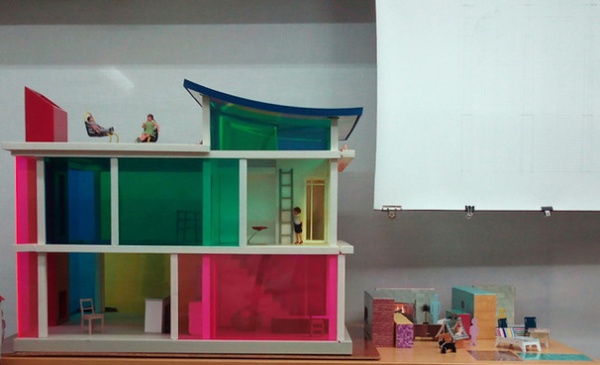
Favorite item: “I like a lot of contemporary houses. This one [pictured] is the Kaleidoscope House and is very popular among dollhouse collectors. The last one in my collection is a beautiful one, Villa Sibis, from the company Sirch. I love it,” Díaz says.
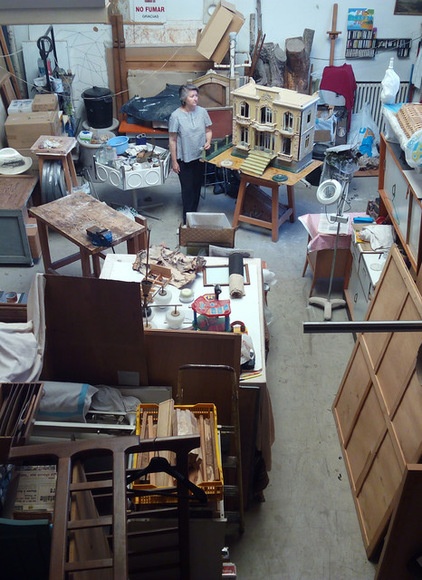
Storage strategy: “I have all the dollhouses at home or in my studio. I do not have any strategy to store them — some are exposed on shelves and some jumble together on the floor,” Díaz says. “There are a few in my studio and most of them are inside big boxes.”
Best sources: “The great majority are gifts from people who do not want to take care of them but do not want to throw them away either,” Díaz says. “I find my houses during travels to different countries, antiques stores or on the Internet. Many of them are gifts from people who know about my hobby.”
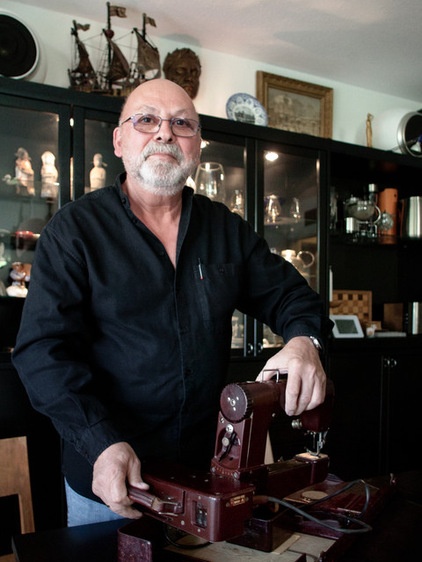
9. Tribute to East German Design in Berlin
Collector: Günter Höhne, 72
Occupation: Journalist and author
Location: Berlin, Germany
The collection: More than 10,000 East German [GDR] design items, although Höhne has given many pieces to museums in Germany, such as the Neue Sammlung in Munich.
How he got started: “I have always been a collector; even as a child I looked for pieces of broken porcelain with golden trims,” Günter Höhne says. “After the [Berlin] Wall came down, I rescued some objects, but collecting GDR design systematically started because of two incidents. First, I was asked to help organize an exhibition about GDR design in Cologne in 2000, and the collector who wanted to lend us his pieces withdrew last-minute — what else could I have done other than search for and buy the items we wanted myself? Working with the exhibition makers and conservators, I learned a lot about restoring these objects. And I got hooked by the stories they had to tell. I wanted to know more.
“The other reason why I continued collecting and also publishing a lot of books about GDR design was defiance: No one appreciated the designs. They were neglected, and people even said there had been no design culture in GDR. I wanted to change that opinion, and I did.”
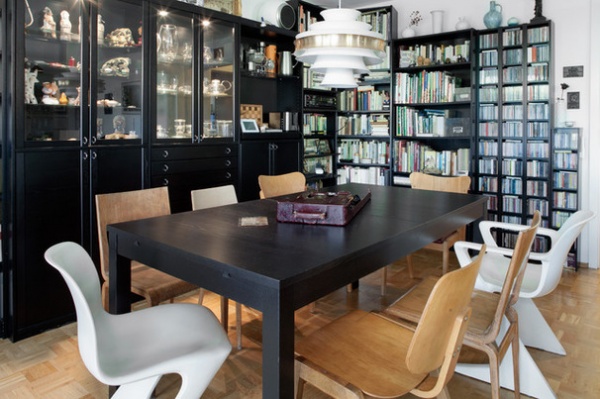
Storage strategy: “I had a big attic full of stuff, but it has always been important to me and my wife to really live with these designs and use them,” Höhne says. “All the chairs and the lamp in our dining area are original GDR designs, as well as the water glasses we use — they are called Superfest (“super strong”) and were made of a patented material that never breaks!
“I also have some classic vitrines in the dining room and in my home office, where I store some special items sorted by designers or materials. I also have a vast documentation of my collection; I have photographed and cataloged every item.” This documentation can be seen on Höhne’s website.
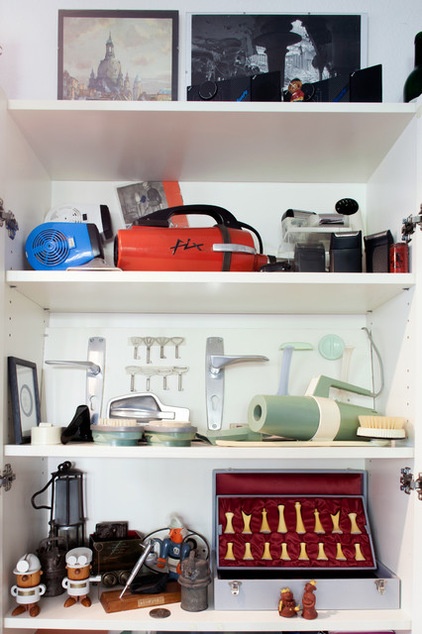
Best sources: “I have looked everywhere, found pieces in flea markets … entered abandoned buildings, such as the old GDR broadcasting center — and took the door handles with me,” Höhne says. “I published small ads and, most of all, talked a lot to the old GDR designers, which was a very enriching experience, and some passed on objects to me. After a while, I noticed one thing: If you’re into a topic, the best things will find you.”
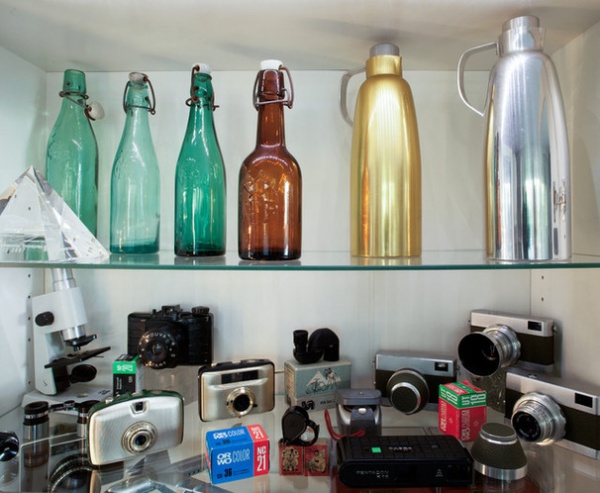
Favorite item: “There are so many items with a great story, but one of my favorites is the portable sewing machine Freia, designed by engineer Ernst Fischer in early GDR for VEB MEWA Ernst-Thälmann-Werk Suhl [pictured here]. It’s a perfectly practical and thoughtfully designed item with a very interesting history. Its case is made of Duroplast, a plastic composite that also includes fabric remnants from the production of [Free German Youth] uniforms, which themselves were sewn using the Freia.”
One item Höhne is especially attached to is a can made of aluminum and designed by Margarete Jahny for VEB Aluminiumwerk Fischbach in 1959-60, pictured top right. The designer herself gave it to him as a gift.
See more of this collection
Tell us: Do you have an interesting collection at home? Share a photo in the Comments and tell us where you live and how you got started.
Related Articles Recommended












